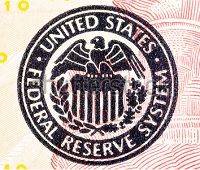Federal Reserve Limitations Fuel Bullish Activity In Gold

Gold has been a very interesting commodity to watch as of late. Recently, we've seen quite a bit by way of declines as investors believed that the Fed would increase its interest rate. However, late last week, new data was released that suggests that a rate hike is off of the table. Today, we'll talk about why the Federal Reserve's interest rate has anything to do with gold, the data that will likely hinder the Fed's plans to increase its rate, and what we can expect to see from the price of gold moving forward.
Why The Federal Reserve's Interest Rate Has Anything To Do With Gold
Before we get into the relationship between the Fed's interest rate and gold, it's important that you understand exactly what the interest rate represents. You see, years ago, the United States left the gold standard. This means that the USD was no longer backed by gold. Instead, the value of the USD was backed by trust, and solidified by interest owed on the dollar. The Federal Reserve essentially controls that interest rate.
When the Federal Reserve makes the decision to increase its interest rate, what it's really doing is adding value to the USD. After all, higher interest will lead to higher demand. Adversely, when the Fed decreases its interest rate, the USD tends to fall as there is not as much value in interest, leading to demand declines. This is where gold comes in.
Like most other commodities gold is priced using the USD. Therefore, when changes happen in the value of the USD, they tend to affect gold in a big way. When the USD gains, gold becomes more expensive around the world thanks to a higher USD currency exchange rate. This leads to declines in the demand for and value of gold. Adversely, when the USD declines, global exchange rates associated with the USD are lower, leading to cheaper gold and higher global demand. This leads to gains in the precious metal. So essentially, when the Fed reduces its rate, it causes the USD to fall and gold to rise. Adversely, when the Fed increases its rate, it causes the USD to gain and gold to fall.
New Data Suggests That A June Rate Hike Is Off Of The Table
Recently, investors believed that the Federal Reserve would be increasing its interest rate in June. This caused declines in the value of gold. However, for the Fed to do so, economic conditions in the United States would have to be strong, and a recent report shows anything but! Late last week, the US Jobs report was released showing that the economy only added 38,000 jobs. This was a big miss from analyst expectations of 162,000 job additions and well below the pivotal mark found at 200,000 monthly job additions. This data shows that the US economy isn't doing as well as many had expected. As a result, the Federal Reserve isn't likely to raise its interest rate this month as it would cause too much economic pressure for the United States.
What We Can Expect To See From Gold Moving Forward
The recent data out of the United States further solidifies my bullish opinion with regard to gold. The reality is that the global economy isn't doing well, and global markets are concerning to say the least. As a safe haven investment, it is during times like these that investors tend to flock toward gold, leading to massive gains in demand. As the law of supply and demand tells us, this should send the value of gold skyrocketing further.
********

















